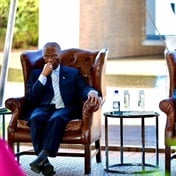
- A recent trial provided evidence supporting the use of shorter treatment regimens in children with non-severe TB.
- This shorter treatment regimen has important benefits for children and their caregivers, says an expert.
- Since it’s two months less, it’s also less of a burden to the clinic, and therefore a win-win, says another expert.
South Africa last published comprehensive guidelines for the management of childhood tuberculosis (TB) in 2013.
Almost a decade later, there is a pressing need to update the guidelines to ensure that infants, children, and adolescents in South Africa can benefit from scientific advancements in the prevention, diagnosis, and treatment of TB.
To ensure that scientific advances in childhood TB are reflected in national policy and translated into practice, this week South Africa’s national TB Think Tank – a network of experts who work closely with government on the country’s national TB response – launched a paediatric, adolescent, and maternal TB working group within the Think Tank.
Addressing the needs of groups who get left behind
The new working group was announced yesterday by the Desmond Tutu TB Centre’s Dr Karen du Preez at the South African TB Conference underway in Durban.
Professor Anneke Hesseling, Director of the Desmond Tutu TB Centre at the Department of Paediatrics and Child Health at Stellenbosch University, told Spotlight: “The South African TB Think Tank will now have a dedicated group that’s integrated with the [other working groups] to address specifically the needs of kids, adolescents, and pregnant women who often get left behind in research, policy and implementation.”
According to Hesseling, in tackling the update of South Africa’s national guidelines for the management of childhood TB, the new TB Think Tank working group and the Desmond Tutu TB Centre will, together with the Department of Health, take a modular approach – as done by the World Health Organization (WHO).
READ MORE | SA’s visionary research leads to new WHO guidelines for improved TB treatment
“Instead of now rewriting the entire paediatric TB national guidelines, we are going to focus on the priority areas and do it in a modular fashion,” says Hesseling.
The first priority of the new working group will be updating paediatric TB treatment guidelines to reflect new scientific advancements, with a specific focus on incorporating evidence from the recent SHINE trial, which provided evidence in support of using shorter treatment regimens in children with non-severe TB.
The SHINE trial compared the efficacy and safety of a shorter, four-month treatment regimen for drug-susceptible TB with the six-month standard of care regimen in children with non-severe, smear-negative pulmonary TB in South Africa, Zambia, Uganda, and India.
READ MORE | Testing and screening for TB back on track following Covid-19 disruptions - NICD
Taking account of evidence from SHINE, the WHO published new recommendations for treatment of TB in children in March, recommending the use of four-month TB treatment regimens in children with non-severe TB.
The WHO recommendations were published together with an operational handbook that gives advice on how TB programmes and healthcare workers can identify and diagnose children with non-severe TB that can benefit from shorter, four-month regimens – recognising that access to diagnostic tools is highly variable across different contexts.
Accuracy of Xpert Ultra for the diagnosis of paediatric tuberculosis in a low TB burden country: a prospective multicentre study https://t.co/hn3QAEEgwm pic.twitter.com/ymfRr4wTcp
— ThoraxBMJ (@ThoraxBMJ) September 8, 2022
Why are shorter TB treatment regimens so important for kids?
It is estimated that around two-thirds of children with TB have non-severe TB and can benefit from a shorter treatment regimen. In October 2020, Spotlight reported on early results from the SHINE trial showing that TB treatment regimens can be effectively and safely shortened from six to four months with non-inferior treatment outcomes in children with non-severe TB.
Says Hesseling:
She adds: “SHINE was extremely pragmatic. It just took the total of six months of treatment and just chopped off two months … everyone got the same treatment, it was just two months shorter in the one group,” she adds.
Benefits of shorter regimen
The shorter treatment regimen has important benefits for children and their caregivers. Wieda Human from TB Proof, an advocacy organisation started by TB survivors, explains: “It remains difficult to give medication to children, especially if multiple tablets are taken over a prolonged period of time.”
“A shorter, more child-friendly regimen makes it easier for children to adhere and complete treatment with a lower likelihood of drug toxicity,” says Human. She adds that shortening treatment regimens also has the potential to save families money by reducing the number of clinic visits needed and associated travel costs.
“Because it’s two months less, it’s also less of a burden to the clinic, because there are fewer clinic visits. So, it’s a win-win. It costs less money for the family, and it costs less money for the government. Also, the new fixed-dose combinations are practical, affordable, and palatable in children,” says Hesseling.
Hesseling says that new guidelines recommending the use of shorter TB treatment regimens in children will be circulated to stakeholders for input and consultation before the end of 2022.
Dr Norbert Ndjeka, director of South Africa’s national TB control programme, confirmed to Spotlight that the National Department of Health is working with the Desmond Tutu TB Centre to update South Africa’s paediatric TB treatment guidelines.
“We have included this in our TB Recovery Plan for implementation next year. Guidelines’ revision and other preparatory activities are taking place this year,” says Ndjeka. As Spotlight reported on Thursday, some details of the TB recovery plan were presented this week at the SA TB conference.
Dr Juli Switala from @Auruminstitute says, "We are failing children who can't cough."
— Spotlight (@SpotlightNSP) September 14, 2022
She is talking about a learner who had to miss 2 years of school to go to a TB hospital. #SATBConference2022 #endTB @SECTION27news@DTHF_SA @LindaGailBekker
@satvi_uct @Jeranji @paed_sa pic.twitter.com/uJW16mOU1K
Will new guidelines for treatment of childhood TB recommend the use of fixed-dose combinations?
While fixed-dose combinations that combine multiple TB medicines into a single tablet were used in the SHINE trial, the delayed registration of fixed-dose combinations of drug-susceptible TB medicines in child-appropriate doses by the South African Health Products Authority (SAHPRA) has stood in the way of their use in the public sector.
That situation has now been resolved. The Department of Health issued a circular in June 2021 announcing the registration of fixed-dose combinations of first-line TB medicines for infants and children and providing guidance on their use.
How will children eligible for shorter treatment regimens be identified?
Diagnostic tools for TB include laboratory and clinic-based tests to confirm the presence of TB bacteria in patient samples (typically sputum, but also in urine and stool samples). Young children, however, often have difficulty coughing up a sputum sample for TB testing and, even when they are able to produce sputum, the low levels of TB bacilli in children and infants’ sputum make TB difficult to diagnose.
Most children with TB test smear-negative, meaning that TB is not detected in their sputum sample when using standard diagnostic tests.
READ MORE | Are the kids okay? How the pandemic spiked mental health issues in children, and how to help them
When the results of diagnostic testing are negative but TB remains suspected, when a sputum sample cannot be collected, or when diagnostic tests are unavailable, clinical assessments can be used to diagnose TB in children, advises the WHO.
The new operational handbook published by the WHO, together with its 2022 recommendations for treatment of TB in children, provides guidance on how to clinically diagnose TB in children in the absence of a positive diagnostic result – with or without a chest X-ray.
Access to chest X-rays challenging
When available, chest X-ray images can aid healthcare workers in diagnosing TB in infants and children, and also provide useful insight into the severity of disease and children’s eligibility for shorter treatment regimens. However, accessibility of chest X-ray infrastructure remains disparate across different contexts.
In March, the International Union Against TB and Lung Disease (the Union) published a guide for the use of chest X-rays in diagnosing TB in children. The guide was produced by researchers at Desmond Tutu TB Centre, Department of Paediatrics and Child Health, and Faculty of Medicine and Health Science at Stellenbosch University led by Dr Megan Palmer.
The guidance published by the WHO and the Union can be applied by national TB programmes seeking to introduce shorter TB treatment regimens for children with non-severe TB across different contexts.
The bottom line
“South Africa is quite well resourced, but we have many different scenarios. If you are sitting in a rural clinic in the Eastern Cape versus sitting in Khayelitsha in Cape Town, you might have access to an X-ray or not, you might be able to do a sputum sample or not. Therefore, it is important to ensure that guidelines consider the local context,” says Hesseling.
“But the bottom line is if a child is sick, has been investigated with what you have, it’s fine to start TB treatment based on clinical grounds, once you have excluded other obvious pathology. Clinical follow-up remains critically important to verify the diagnosis and to evaluate treatment response. If children don’t get better on TB treatment, then you should think of something else.”




 Publications
Publications
 Partners
Partners






















